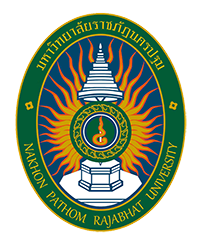 การประชุมวิชาการระดับชาติ ครั้งที่ 16
|
| Title | Mass Rearing of Egg parasitoid and Its Efficiency in Controlling Brown Planthopper in Paddy Fields |
|---|---|
| Other Titles: | การเพาะเลี้ยงเพิ่มปริมาณแตนเบียนไข่เพลี้ยกระโดดสีน้ำตาล และประสิทธิภาพในการควบคุมเพลี้ยกระโดดสีน้ำตาลในสภาพแปลงนา |
| Authors EN |
|
| Authors TH |
|
| Keywords | Rice,Nilaparvata lugens (Stål),Egg parasitoid of the brown planthopper (Anagrus spp.),Mass rearing,Biological control |
| Issue Date | 13-Aug-2024 |
| Publisher | The 16th NPRU National Academic Conference Nakhon Pathom Rajabhat University |
| Abstract | The brown planthopper (Nilaparvata lugens (Stål)) is a rice pest causing frequent and severe outbreaks in rice cultivation areas, resulting in damage to rice yields. Utilizing natural enemies for biological control of brown planthoppers offers a safe, effective, and environmentally friendly alternative. The objective of this research was to develop a mass rearing method for egg parasitoids of brown planthoppers (Anagrus spp.) under laboratory conditions and to evaluate the efficiency of Anagrus spp. in controlling brown planthoppers in field conditions. The methodology involves collecting populations of Anagrus spp. from paddy fields using brown planthoppers’ egg bait traps in Suphan Buri and Chai Nat provinces during 2022-2023. Then, these parasitoids were mass reared in laboratory conditions using rice seedlings with brown planthopper eggs and provided with honeydew as food. The findings are, 509.96 parasitoids were produced per rearing container, with an average emergence rate of 162.15 individuals per day. A single female parasitoid could produce an average of 22.33 offspring (on average 5.20 male parasitoids and 17.13 female parasitoids), with a sex ratio (male:female) of 1:3. Field trials conducted during wet season 2023 showed that releasing five pairs of male and female Anagrus spp. parasitoids per 10 plants (rice plant aged 15-20 days after transplanting) with brown planthopper eggs present, resulted in a maximum parasitism rate of 61.22%. The highest F1 generation production averaged 55.40 individuals, with 26.40 male parasitoids and 24.20 female parasitoids per release, maintaining a sex ratio (male:female) of 1:1. These preliminary results require further study. They can serve as guidelines for farmers on increasing the quantity and release rate of Anagrus spp. to effectively control brown planthoppers in rice fields.
|
| ISBN | 978-974-7063-46-2 |
| URI | https://rdi.npru.ac.th/conference16 |